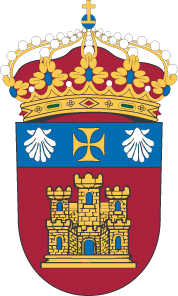Por favor, use este identificador para citar o enlazar este ítem: http://hdl.handle.net/10259/4284
Título
Modelling phenolic and technological maturities of grapes by means of the multivariate relation between organoleptic and physicochemical properties
Publicado en
Analytica Chimica Acta Volume 761, 25 January 2013, Pages 53–61
Editorial
Elsevier
Fecha de publicación
2013-01
Abstract
The ripeness of grapes at the harvest time is one of the most important parameters for obtaining high quality red wines. Traditionally the decision of harvesting is to be taken only after analysing sugar concentration, titratable acidity and pH of the grape juice (technological maturity). However, these parameters only provide information about the pulp ripeness and overlook the real degree of skins and seeds maturities (phenolic maturity). Both maturities, technological and phenolic, are not simultaneously reached, on the contrary they tend to separate depending on several factors: grape variety, cultivar, adverse weather conditions, soil, water availability and cultural practices. Besides, this divergence is increasing as a consequence of the climate change (larger quantities of CO2, less rain, and higher temperatures).
247 samples collected in vineyards representative of the qualified designation of origin Rioja from 2007 to 2011 have been analysed. Samples contain the four grape varieties usual in the elaboration of Rioja wines (‘tempranillo’, ‘garnacha’, ‘mazuelo’ and ‘graciano’).
The present study is the first systematic investigation on the maturity of grapes that includes the organoleptic evaluation of the degree of grapes maturity (sugars/acidity maturity, aromatic maturity of the pulp, aromatic maturity of the skins and tannins maturity) together with the values of the physicochemical parameters (probable alcohol degree, total acidity, pH, malic acid, K, total index polyphenolics, anthocyans, absorbances at 420, 520 and 620 nm, colour index and tartaric acid) determined over the same samples. A varimax rotation of the latent variables of a PLS model between the physicochemical variables and the mean of four sensory variables allows identifying both maturities. Besides, the position of the samples in the first plane defines the effect that the different factors exert on both phenolic and technological maturities
Materia
Chemistry
Mathematics
Química
Matemáticas
Versión del editor
Collections
Documento(s) sujeto(s) a una licencia Creative Commons Attribution-NonCommercial-NoDerivatives 4.0 International











